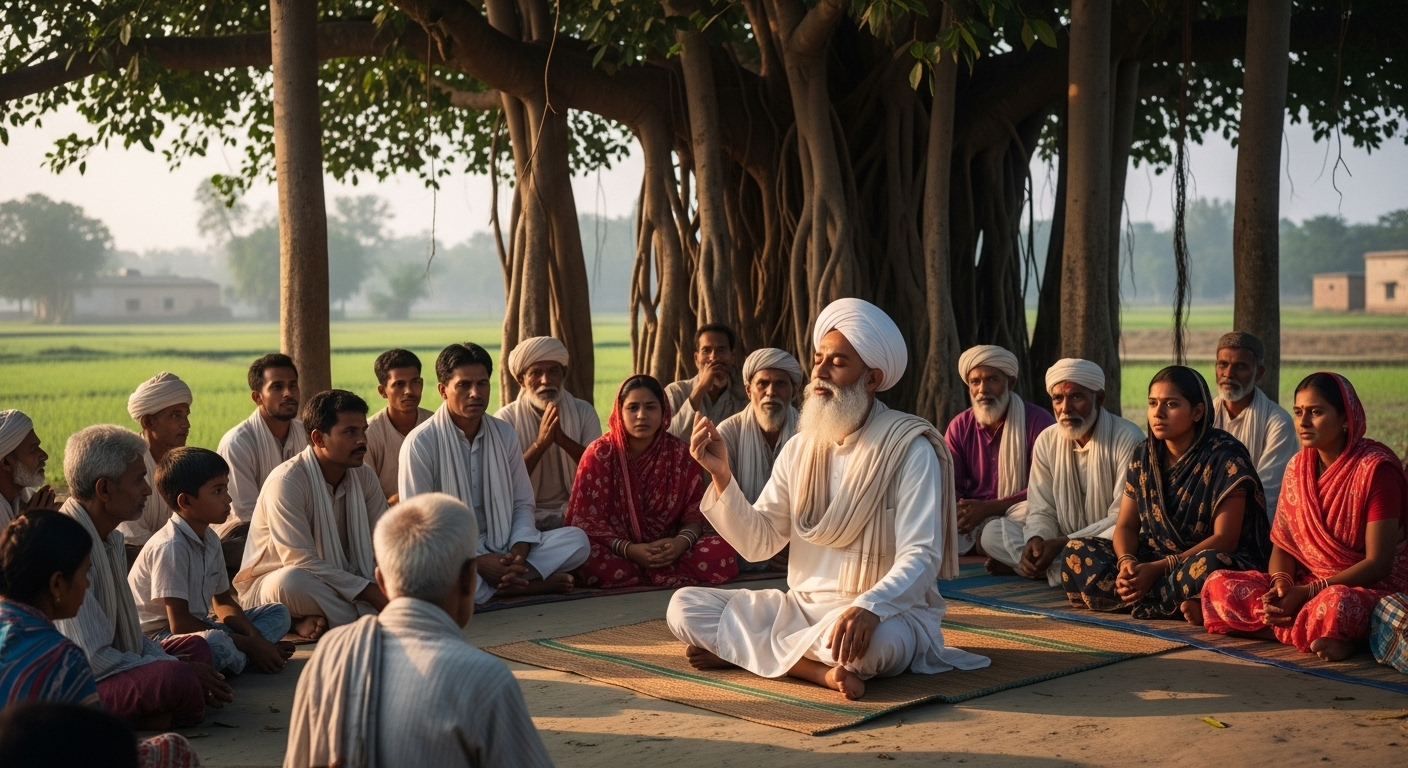Imagine a land where ancient rivers whisper tales of diverse cultures and faiths colliding. Bengal, with its vibrant heritage, offers one of history’s most compelling narratives: the fascinating journey of how Islam took root and flourished, creating a unique identity that endures to this day.
Nestled strategically at the crossroads of ancient trade routes, Bengal’s unique geography made it a historical hub for commerce and cultural exchange. But have you ever wondered how Islam, a faith born far across the Arabian sands, became the dominant religion in this distant land? The story of how Islam spread in Bengal is far from simple, involving a blend of trade, spiritual appeal, and political shifts. We’ll explore the key factors that led to its widespread acceptance and the fascinating formation of a distinct Bengali Muslim identity, unraveling centuries of captivating Bengal Islam history.
Understanding the Journey: Key Ways Islam Flourished in Bengal
Before diving into the intricate details, let’s briefly look at the main avenues through which Islam found its way into Bengal. The story of how Islam spread in Bengal can largely be understood through four interconnected paths: peaceful trade and early coastal contacts, the subsequent military and administrative establishment by Turkic rulers, the unparalleled spiritual magnetism of Sufi saints, and crucial socio-economic incentives coupled with local cultural adaptation. Each played a vital role in shaping the unique Bengali Muslim identity we see today.
Early Seeds: Pre-Sultanate Encounters (8th-12th Century)
A. Arab Traders and Coastal Contact
Long before any major military conquests reshaped the landscape, Arab merchants navigated the Bay of Bengal, establishing bustling trade relations along Bengal’s coasts. These intrepid traders weren’t just exchanging goods; they were also subtly sharing aspects of their faith and culture. While initial conversions were limited, primarily concentrated among local coastal communities, these peaceful interactions truly sowed the very first seeds of Islam in Bengal, marking an essential early chapter in its Bengal Islam history[1].
B. Sufi Pioneers and Spiritual Inroads
Even in these early centuries, Sufi mystics began making their way to Bengal, playing a quiet but profound role in this early phase of how Islam spread in Bengal. Figures like Baba Adam Shahid are believed to have arrived during the 11th century, bringing with them a message of spiritual love and simplicity. These early Sufis often adopted a non-confrontational approach, focusing on prayer, meditation, and actively serving local communities. Their profound spiritual appeal, coupled with their humble lifestyles, gradually attracted marginalized groups, initiating a subtle, yet significant, infiltration of Islamic thought and practice and laying the groundwork for the future of Sufism in Bengal.
The Catalyst: Turkic Invasions and Administrative Establishment (13th-14th Century)
A. Military Conquest and Political Shift
A truly significant turning point in how Islam spread in Bengal came with the powerful wave of Turkic invasions from the Delhi Sultanate. The most notable of these was Bakhtiyar Khalji’s conquest of Nadia in the early 13th century, which effectively dismantled the Sena dynasty’s rule in parts of Bengal. These military victories weren’t merely about territorial expansion; they fundamentally reshaped the political landscape, establishing Muslim rule and laying the crucial groundwork for a more structured and extensive presence of Islam in the region.
B. Creation of Sultanates and Patronage
Following the initial conquests, independent Sultanates began to emerge in Bengal, most notably the influential Ilyas Shahi dynasty. These rulers played a pivotal role in promoting Islam through deliberate Islamic patronage in Bengal. They actively supported the construction of mosques and madrasas (Islamic schools), transforming them into vibrant centers of learning and worship. Their patronage extended generously to Ulama (religious scholars) and Sufis, providing them with land grants and resources, which further facilitated the propagation of the faith[2]. This shift from sporadic contact to institutional support significantly accelerated how Islam spread in Bengal across its varied communities.
The Heart of the Matter: The Indispensable Role of Sufism
A. Sufi Saints: The True Missionaries of Bengal
While military conquests undeniably established political control, it was the charismatic Sufi pirs who were arguably the most instrumental in the widespread acceptance of Islam, truly defining Sufism in Bengal. Figures like Shah Jalal in Sylhet and Khan Jahan Ali in Bagerhat became legendary, revered for their spiritual prowess and ability to perform what were perceived as miracles. They established khanqahs (Sufi lodges), which served as much more than just places of worship; these were vibrant centers of spiritual guidance, community service, and learning. These Sufis connected deeply with local populations, often adopting local languages and customs, making Islam accessible and profoundly relatable, directly influencing how Islam spread in Bengal.
B. Mystical Appeal and Social Harmony
The profound Sufi teachings resonated deeply and powerfully with the people of Bengal. Emphasizing universal love, equality, and a direct, personal communion with God, Sufism offered a refreshing and liberating spiritual path, marking a significant aspect of Sufism in Bengal. This stood in stark contrast to the often rigid caste system prevalent in parts of Hindu society, which confined many to lower social strata. For these marginalized communities, Islam, as presented by the Sufis, offered an incredibly attractive alternative, promising dignity and spiritual liberation. The empathetic outreach and deep spiritual depth inherent in Sufism were undoubtedly primary drivers in how Islam spread in Bengal[3].
Socio-Economic and Cultural Dynamics: Why Bengal Embraced Islam
A. Equality and Social Mobility
Beyond its spiritual appeal, Islam also offered tangible socio-economic advantages that significantly contributed to how Islam spread in Bengal. Its egalitarian principles, which preached the equality of all believers before God, were a powerful draw for those who had experienced social discrimination. Under Muslim rule, new administrative and military structures offered unprecedented opportunities for upward mobility, including positions of power and influence previously unavailable to many. This promise of dignity and social upliftment proved to be a compelling factor.
B. Integration with Local Beliefs
Bengal’s religious landscape prior to the advent of Islam was richly diverse, with a strong presence of Buddhism and animist traditions, forming a unique Bengal Islam history precursor. These existing traditions, perhaps less rigidly structured than some Brahmanical orthodoxies in other parts of India, may have made the population more amenable to new religious ideas. Some historians also point to a ‘missing middle’ theory – the relative absence of strong Vaishnava or Shaiva movements in pre-Muslim Bengal, which could have created a spiritual vacuum that Islam effectively filled, offering a compelling new spiritual framework[4].
C. Land Reclamation and Agricultural Expansion
Sufis and Muslim settlers often played a vital, hands-on role in transforming Bengal’s challenging marshy and forested terrain. They led ambitious efforts to clear jungles and reclaim vast tracts of land for agriculture, making previously uninhabitable areas productive and prosperous. These initiatives not only provided significant economic opportunities but also attracted new converts who benefited directly from the improved land and resources. This practical, developmental aspect profoundly contributed to how Islam spread in Bengal by building communities and livelihoods.
The Birth of a New Identity: Syncretism and Cultural Fusion
A. Bengali Muslim Culture
The dynamic interaction between Islamic tenets and rich local Bengali customs, language, and artistic expressions led to the emergence of a truly unique synthesis – the distinctive Bengali Muslim identity. Islam didn’t simply replace existing culture; instead, it gracefully integrated with it, giving rise to a distinct Bengali Islamic literary tradition, rich in local folklore and spiritual narratives. This beautiful fusion is wonderfully evident in everything from architecture to folk music, solidifying a new cultural expression.
B. Shared Spaces and Traditions
Even today, one can observe compelling instances of shared reverence and profound cultural fusion, a testament to the enduring Bengali Muslim identity. Many shrines of Sufi saints are revered by both Muslims and non-Muslims, illustrating a deep-rooted cultural syncretism that continues to thrive. This highlights how Islam in Bengal didn’t merely stand apart but often became intimately intertwined with the broader cultural fabric, creating a truly shared and vibrant heritage.
Conclusion: A Legacy Endures
The widespread acceptance of Islam in Bengal was undoubtedly a multifaceted and intricate process, far from a singular event. It emerged from a complex interplay of early trade contacts, the transformative military conquests by Turkic forces, the profound and indispensable influence of Sufi mystics, compelling socio-economic appeals, and a remarkable degree of cultural assimilation. This rich tapestry of historical interactions profoundly shaped modern Bengal, contributing significantly to its unique Bengali Muslim identity and diverse heritage. The captivating Bengal Islam history of how Islam spread in Bengal is a testament to extraordinary cultural dynamism and deep spiritual resonance, a legacy that continues to define the region’s spirit and culture to this very day.[5]
END








